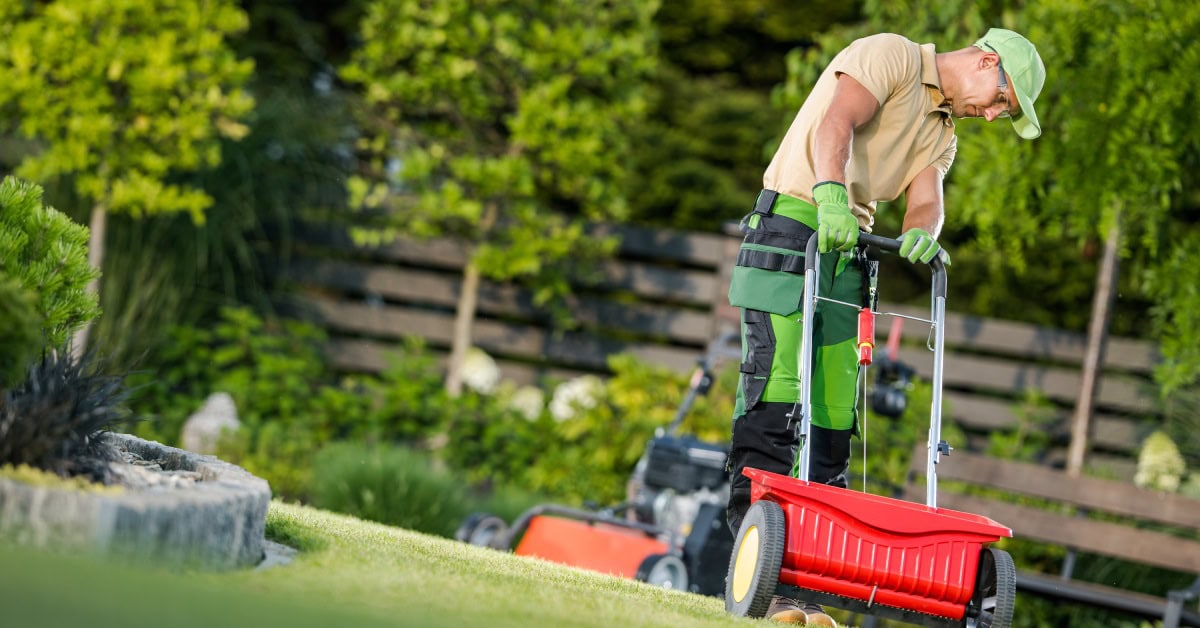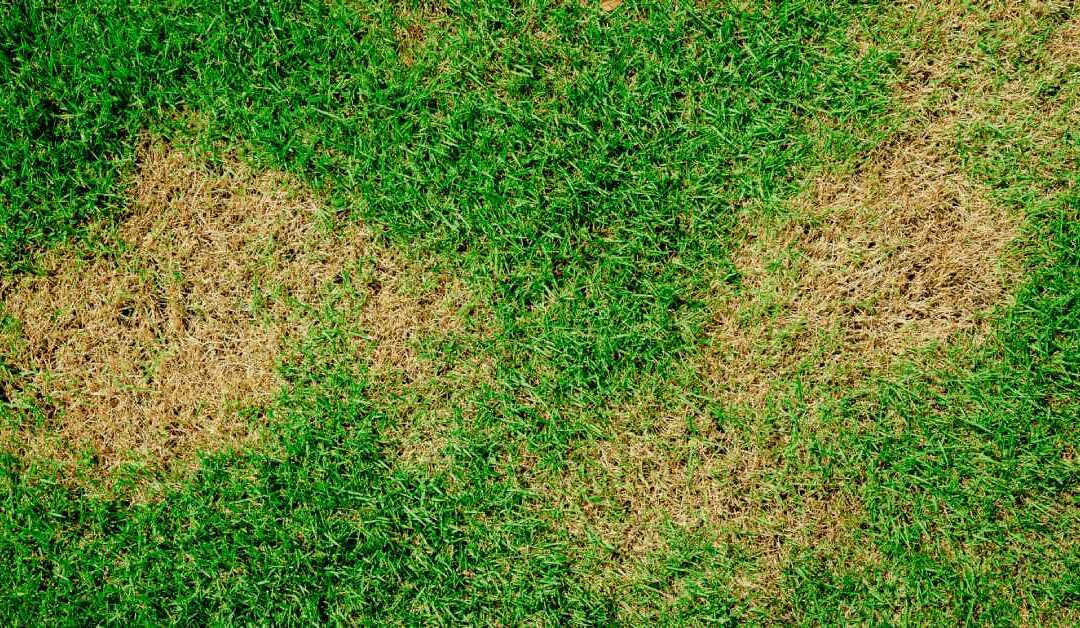Brown spots in your yard can be a real eyesore. These unsightly patches can be caused by a variety of factors, from fungal diseases to nutrient deficiencies. Understanding the root cause of brown spots is essential for treating them effectively and preventing future outbreaks. In this blog post, we’ll explore some common reasons for brown spots in your yard and provide tips for addressing them.
Understanding the Brown Spot Problem
The sight of brown spots on your lawn can be disappointing and perplexing. These patches often indicate underlying issues that need addressing. Before you can fix the problem, you must identify the cause. Let’s dig into the most common culprits that could be affecting your lawn.
Lawn Diseases
Lawn diseases can be a significant cause of brown spots. Fungal infections, such as brown patch, dollar spot, and rust, are notorious for creating these unsightly blemishes.
These lawn diseases thrive in specific conditions, such as excessive moisture and poor air circulation. Staying vigilant and looking for signs of infection, such as discolored grass blades or a white or grayish powder on the grass, can help you catch these diseases early.
Pest Infestations
Tiny pests can often make a big impact on lawn health. Grubs, chinch bugs, and sod webworms are some of the most common insects that can damage your lawn’s roots, leading to brown spots. Plus, these pests often go unnoticed until the damage is evident.
Conducting regular checks and maintaining robust lawn care can prevent these critters from wreaking havoc. Keep an eye out for increased bird activity or animals digging, as these might be indicators of pest presence.
Improper Watering
Water is essential for keeping your yard healthy, but too much or too little can spell trouble for your grass. Overwatering can suffocate the roots and create the perfect environment for fungal diseases. On the other hand, underwatering can cause the grass to dry out and die.
Find a balance and adjust your watering schedule according to the season and soil type. Invest in a rain gauge or a soil moisture sensor to help maintain the right moisture levels.
Pet Damage

Pets, particularly dogs, can unintentionally cause brown spots in your yard. Their urine contains high levels of nitrogen, which can burn grass in concentrated spots.
If you notice brown patches surrounded by a lush green ring, your pet might be the culprit. Encouraging your pet to use a designated area or diluting the spots with water immediately after your pet goes can mitigate the damage.
Nutrient Deficiency
Grass, like any other plant, requires nutrients to thrive. A lack of essential nutrients, especially nitrogen, phosphorus, or potassium, can lead to weak, discolored patches on your lawn.
Regular soil testing can help you identify any deficiencies and address them with the appropriate fertilizers. This ensures your grass receives the nutrients it needs to grow strong and green.
Soil Compaction
Soil compaction occurs when the soil particles are pressed together, leading to a denser and less porous structure. This can hinder root growth and restrict the access of air and water to the grass, ultimately resulting in brown spots.
To alleviate this issue, consider aerating your lawn to promote better drainage and root health, allowing your grass to thrive.
Chemical Burns
While fertilizers and herbicides are beneficial, they can cause more harm than good if not applied correctly. Chemical burns occur when products are applied too heavily or in the wrong conditions, scorching the grass.
Follow the instructions carefully and consider environmental conditions, such as temperature and moisture when applying chemicals to your lawn.
Thatch Buildup
When a layer of dead grass and roots accumulate over time, it creates a barrier called thatch. This buildup prevents water, nutrients, and air from reaching the soil. This can result in brown patches on your lawn.
Regular dethatching and aerating can help mitigate thatch buildup, ensuring your grass has access to the essentials it needs to thrive.
Tips for Treating Brown Spots
Now that we’ve explored the potential reasons you have brown spots in your yard let’s look at some practical solutions to help you restore your lawn to its former glory.
Reseed the Area
For patches that are beyond recovery, reseeding might be necessary. Choose a grass seed that matches your existing lawn for a seamless appearance. Before seeding, prepare the soil by loosening it and mixing in some compost. After sowing the seeds, keep the area moist until the new grass is established.
Adjust Watering Practices
Achieving the right balance in watering is key to optimal lawn health. Aim to water deeply but infrequently, allowing the top inch of soil to dry out between watering. This encourages deeper root growth and reduces the risk of fungal diseases. Consider installing an irrigation system with a timer to automate and optimize your watering schedule.
Use Appropriate Fertilizers
Regular fertilization is crucial for maintaining a healthy lawn. Based on your soil test results, apply a balanced fertilizer that addresses any nutrient deficiencies. Be sure to follow the recommended application rates and timings to prevent chemical burns and excessive growth.
Aerate and Amend Soil
Aeration involves perforating the soil with small holes to improve air exchange, water absorption, and nutrient uptake. Aerating your lawn annually, particularly in high-traffic areas, can alleviate soil compaction and promote healthy growth. Follow up with an organic amendment like compost to enrich the soil.
The TurfPride Promise

At TurfPride, we understand the dedication it takes to achieve and maintain a stunning lawn. Our specialized lawn care program is designed to address the unique challenges faced by homeowners in Atlanta, ensuring that your yard remains vibrant and healthy throughout the seasons.
With our team’s professional expertise and deep knowledge of local soil conditions and climate, we provide tailored solutions that promote lush growth, effective pest control, and optimal nutrient balance. Trust TurfPride to help your lawn thrive, transforming it into the picturesque landscape you’ve always envisioned.
Now that you know the various causes of brown spots in your yard, you can take steps to revitalize your grass. These spots can be a sign of various underlying issues, but with a bit of detective work and the right strategies, you can restore your lawn to perfection. Remember, regular maintenance and comprehensive lawn care are key to preventing future issues. Don’t forget the helping hand of TurfPride, too, if you’re struggling to fix the issue or don’t have the time!

